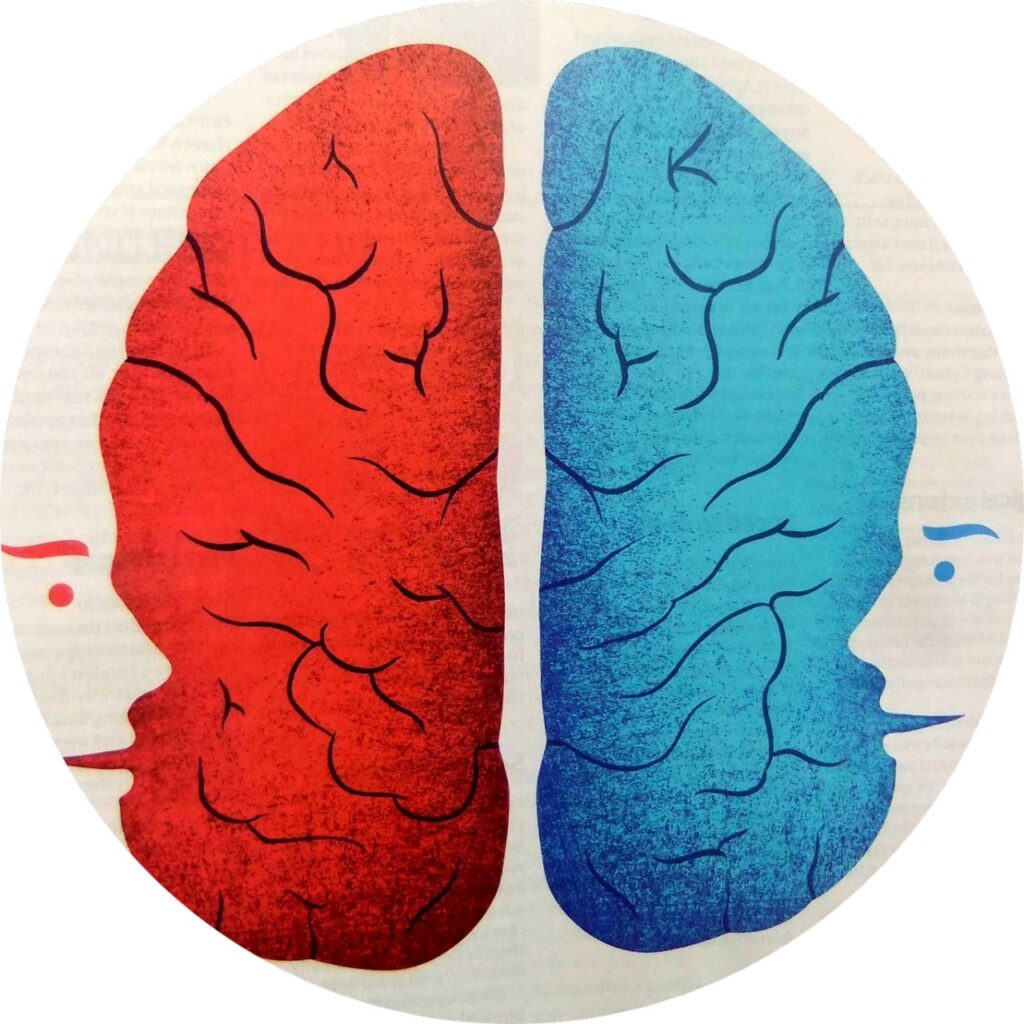This post is also available in Dutch.
Peering Into the Divided Brain
Imagine waking up and realising that your brain is literally divided into two separate halves. This may sound like science fiction, but it is precisely what happens in “split-brain” patients, individuals who have undergone surgery to cut the corpus callosum – the thick bundle of nerves connecting the brain’s two hemispheres – to alleviate severe epilepsy. This condition has captivated scientists and philosophers for decades, opening questions about the nature of consciousness.
One Brain, Two Minds?
At first glance, splitting the brain seems like it should split consciousness, creating two independent minds within one head. Early experiments appeared to support this startling idea. For instance, when images were shown only to the right hemisphere (controlling the left visual field and left hand), patients often reported seeing nothing verbally (controlled by the left hemisphere). However, they were able to accurately identify or draw what they “couldn’t see” with their left hand. This presented the intriguing prospect of two separate conscious minds, only one of which could speak.
Unity Amidst Division
Recent studies, however, reveal a more complex picture. In many perceptual tasks, the two hemispheres do indeed function independently, but in other processes, they stay together. Split-brain patients, for example, typically exhibit fairly typical behaviour in daily life, indicating a single, cohesive consciousness directing their behaviour. These findings challenge the notion of completely separate minds.
Bridging the Divide
So, if consciousness isn’t fully divided, how do the hemispheres communicate without the corpus callosum? Scientists suggest several fascinating explanations:
- Subcortical routes may still carry information between hemispheres.
- Motor coordination allows each hemisphere to control movements on both sides.
- Cross-cueing: one hemisphere “reads” subtle behaviours from the other to stay in sync.
Rethinking Consciousness
Importantly, the split-brain phenomenon pushes us to reconsider our assumptions about consciousness. Consciousness necessitates widespread brain communication, according to theories like the Integrated Information Theory and the Global Neuronal Workspace. If these theories are correct, consciousness should indeed split after surgery. But perhaps we need to update our understanding of consciousness if it is still one despite a physical separation.
Conclusion
The split-brain phenomenon continues to intrigue and challenge our understanding of what it means to be conscious. It reminds us that our sense of a unified self, our very identity, may be more flexible and complex than we ever imagined.
Author: Vivek
Buddy: Amir
Editor: Dirk-Jan
Translator: Lucas
Editor translation: Maartje
